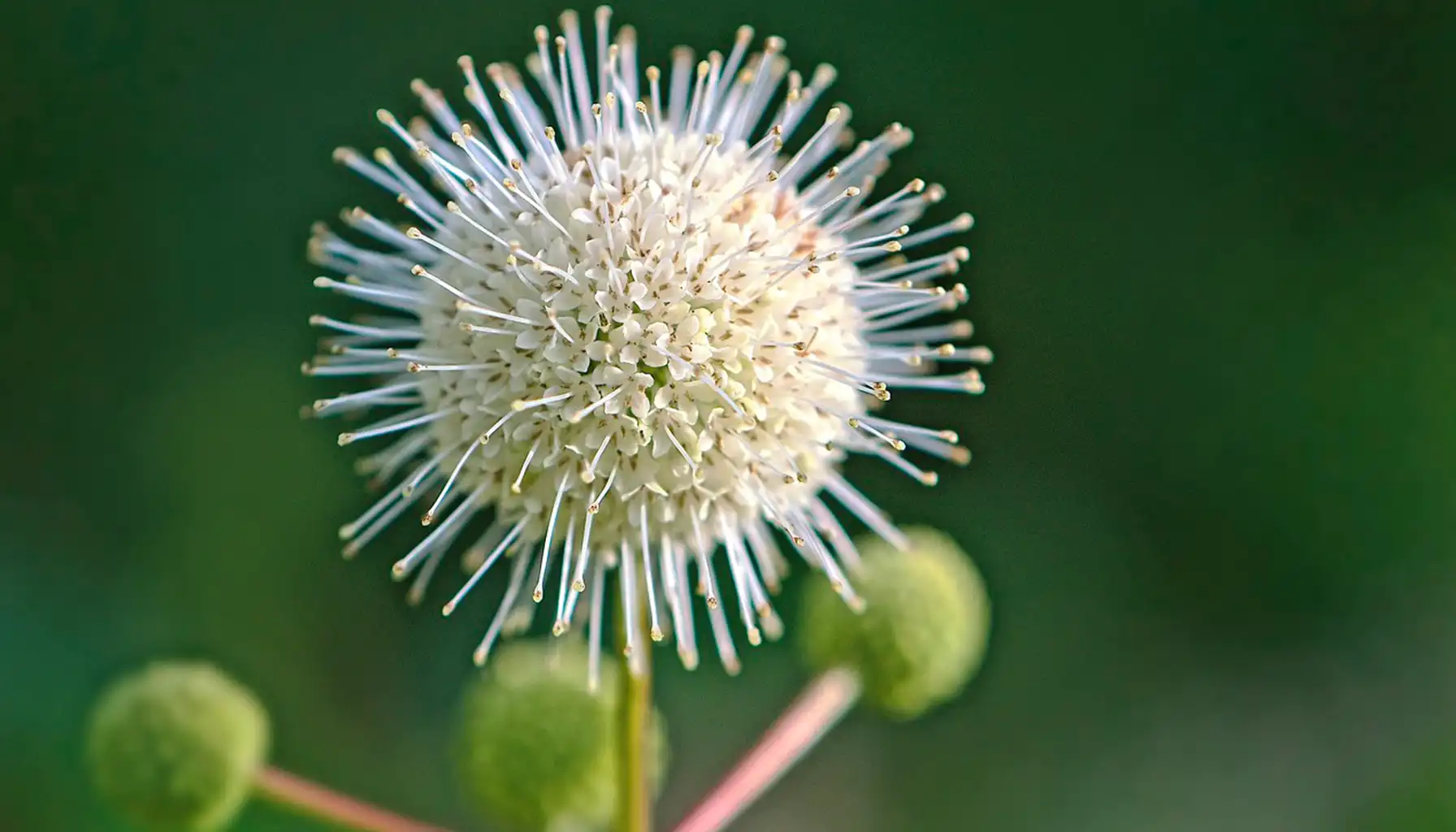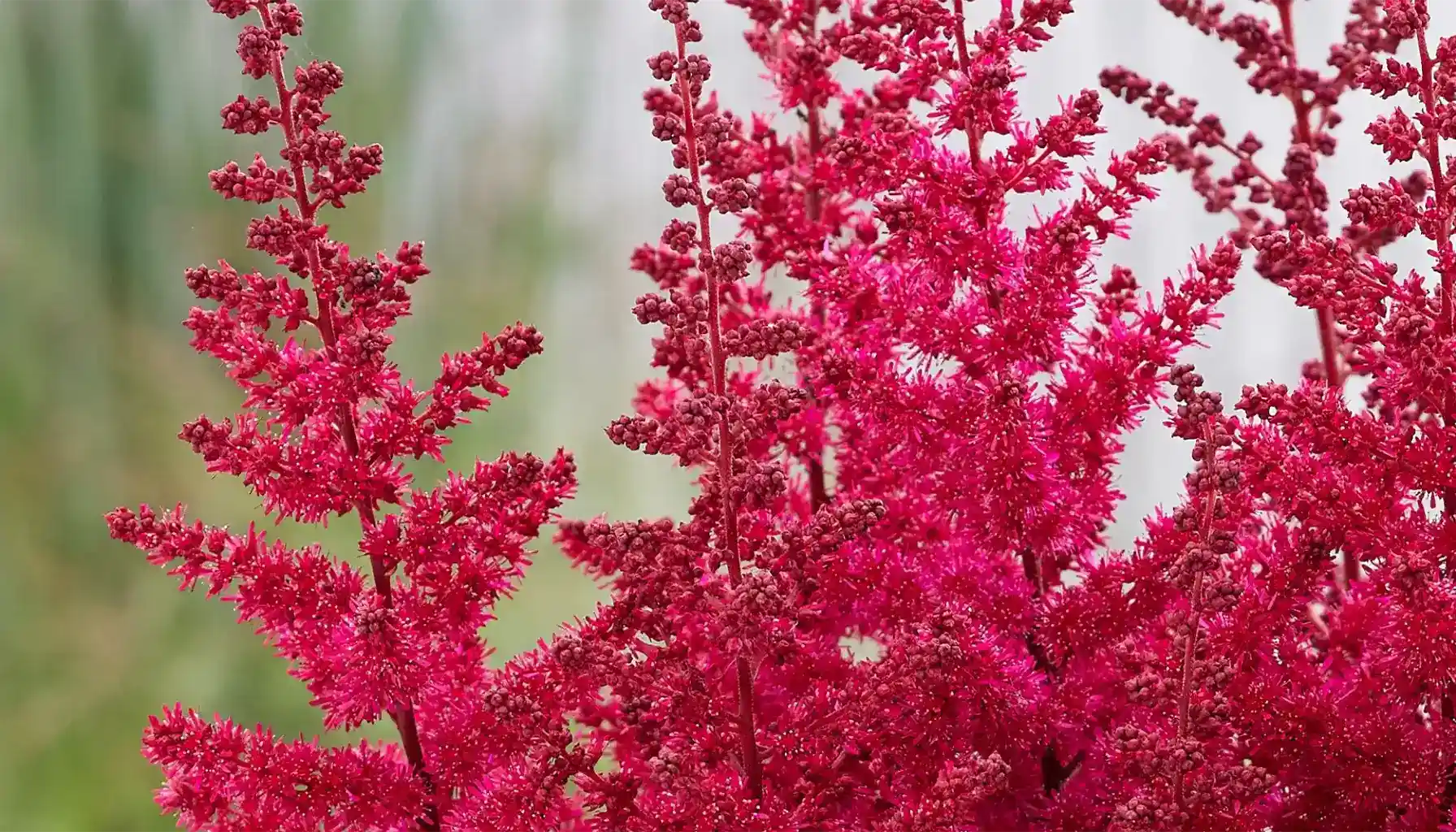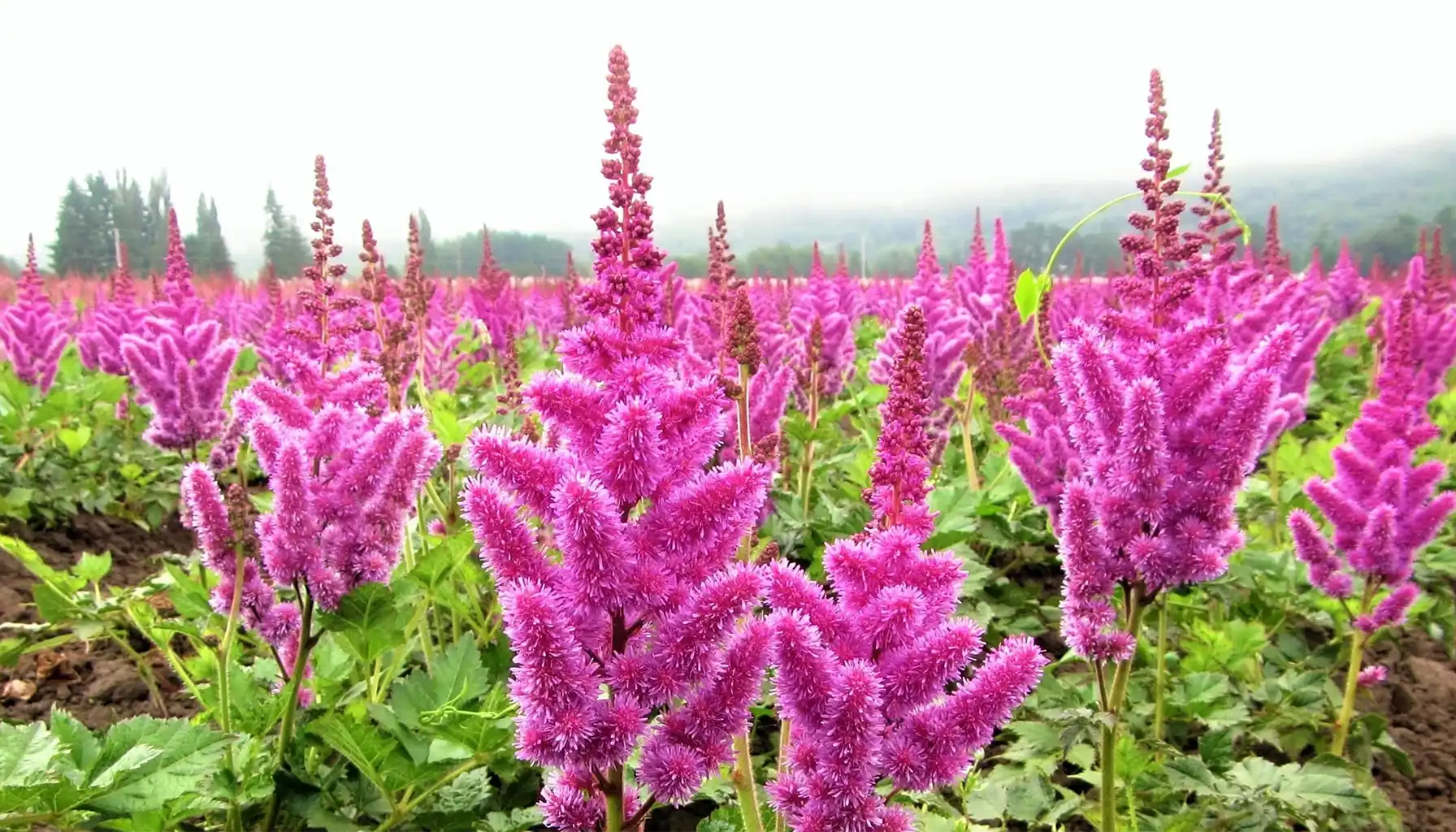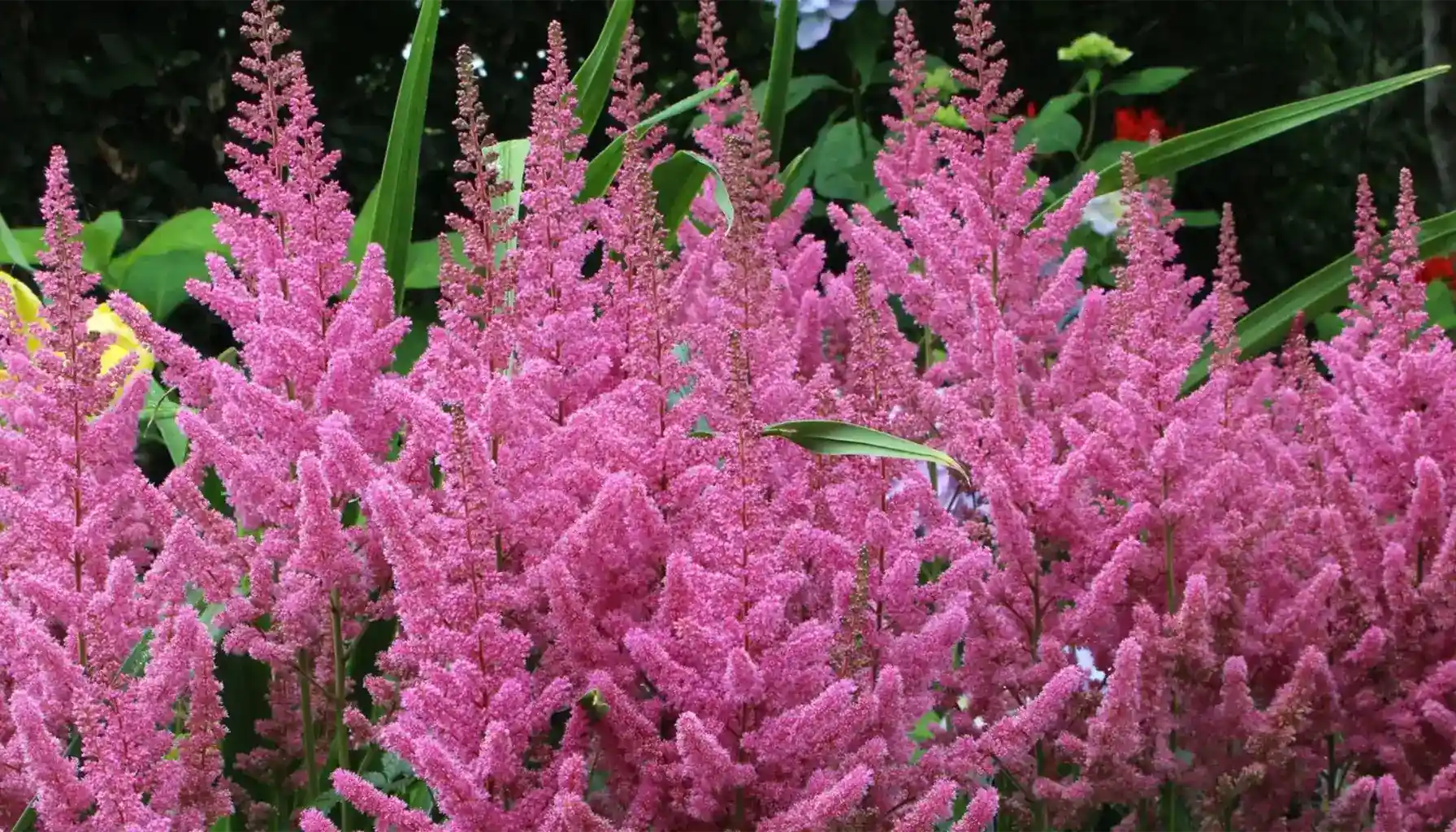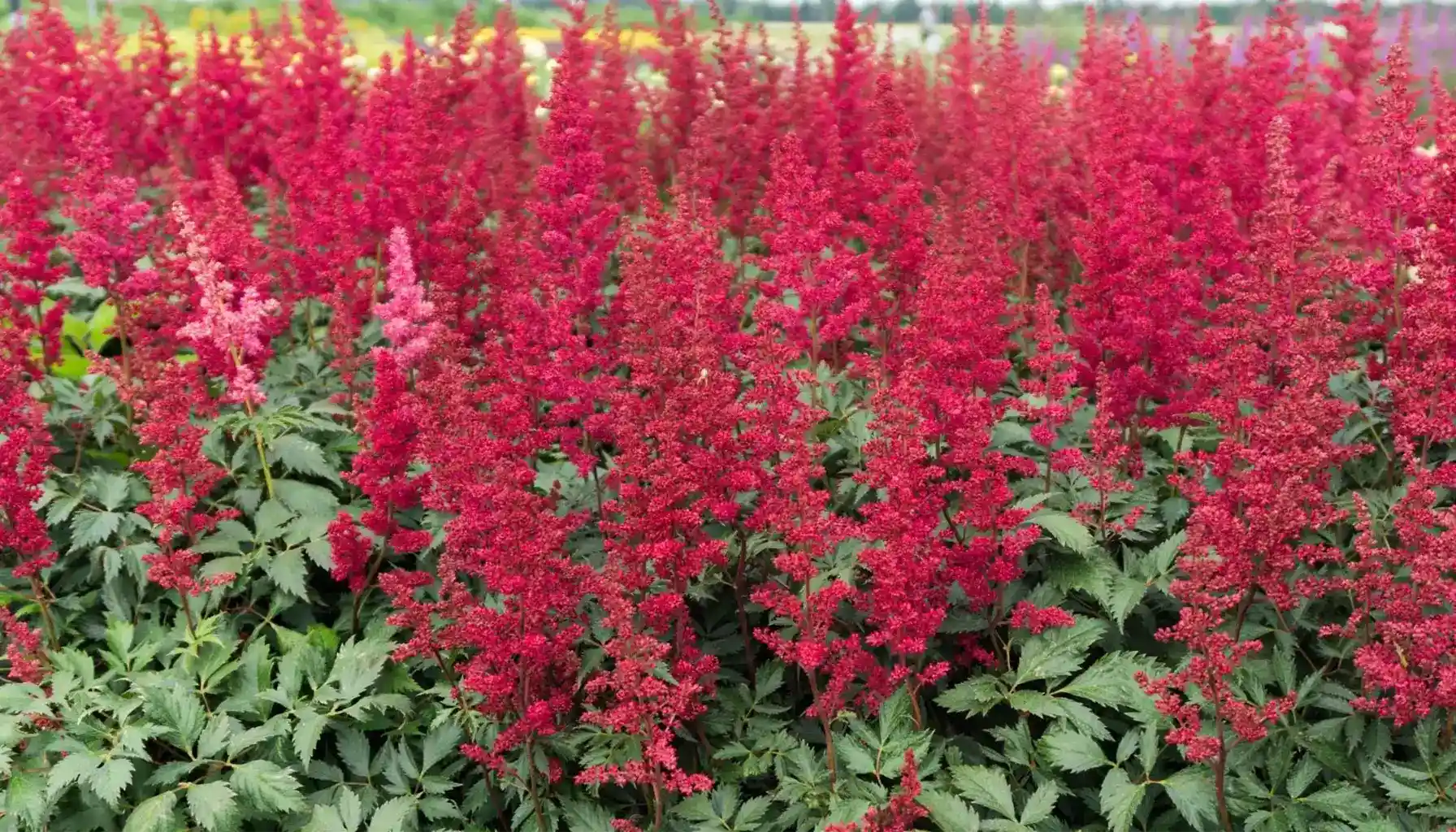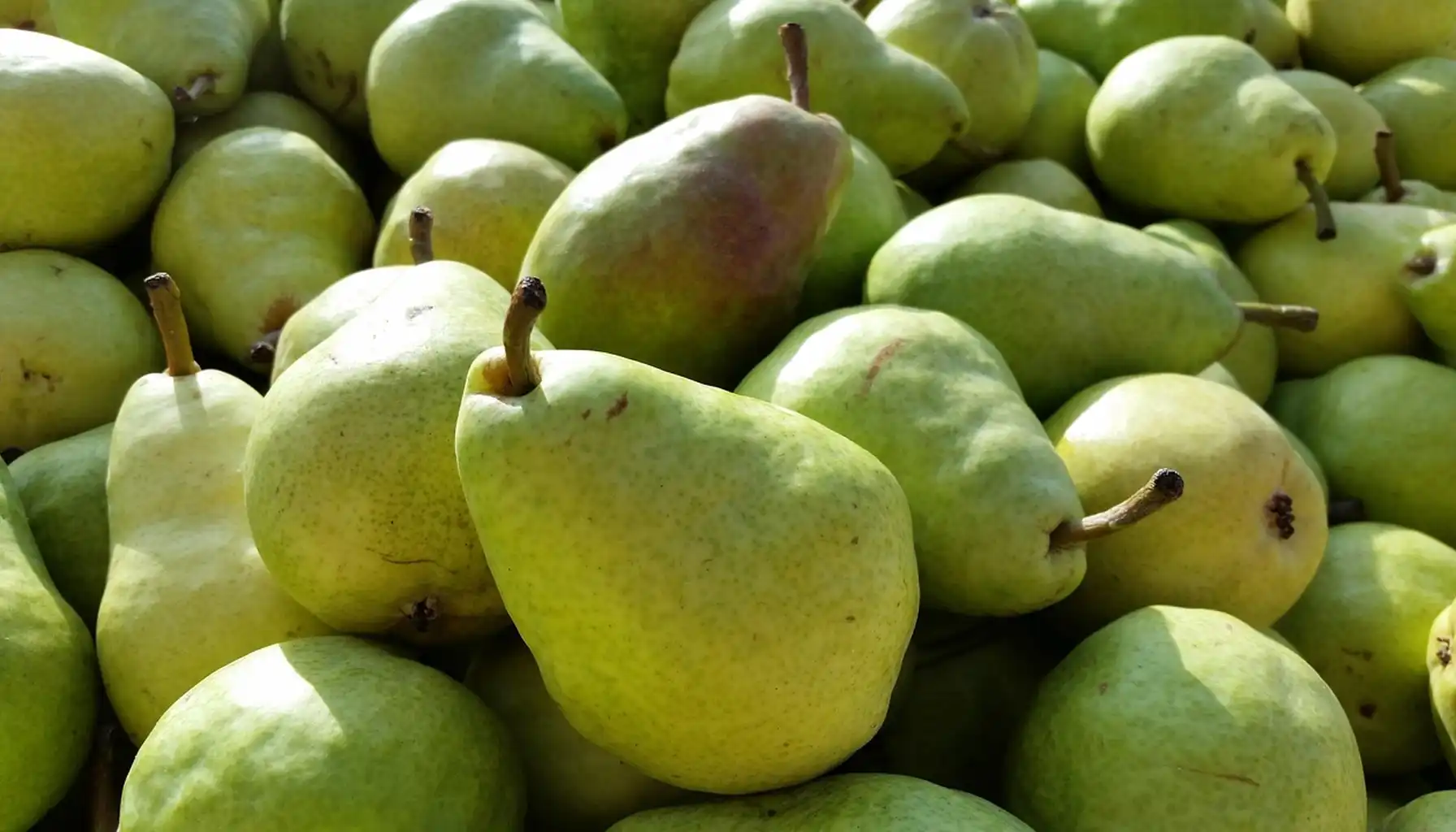Astilbe flower, its feathery plumes and fern-like leaves can grow anywhere the regular plant doesn’t. Its fluffy spikes appear in shades of pink, white, red, and lavender. Astilbe likes moist, partially shaded conditions, like damp borders, woodland edges, and shaded patios.
Astilbes bloom from late spring through summer, the plumes attract butterflies, resist deer and rabbits, and make long-lasting cut or dried flowers. Once planted, these hardy perennials return year after year with minimal care. Though you may spoil any plant if you are not careful enough. Check your plants with the plant identifier right now and get advice on how to take care of them.
Astilbe Basics: Plant Profile & Growth Habit
The astilbe plant is a clump-forming perennial from the Saxifragaceae family. Native to Asia and North America, it likes shaded or semi-shaded gardens where many other flowering species don’t grow.
As an astilbe perennial, it grows from a thick, fibrous rhizome that sends up sturdy, upright stems each spring. These stems have fern-like, deeply divided astilbe leaves, typically dark green or bronze-tinted. The feathery plumes appear from late spring to midsummer in colors ranging from white and soft pink to deep crimson and lavender.
Mature height can vary from under a foot to more than four feet. You can use it for front borders, mixed beds, or woodland plantings. These flowers attract butterflies and beneficial insects, resist browsing by deer and rabbits, and tolerate damp conditions where many perennials fail.
Sunlight, Soil, and Site Selection
So, astilbe sun or shade? Astilbes like partial shade, an environment with bright morning light and protection from harsh afternoon sun. Too much sun can scorch leaves, but you won’t see flowers in complete darkness. In northern regions with cooler summers, they can tolerate more direct light. In hot climates, you would need consistent shade and moisture.
Astilbes prefer evenly damp soil that never fully dries out. If allowed to wilt, the foliage may brown, and the flower spikes can shrink. Enrich the planting area with compost or leaf mold to boost water retention. Mulching helps keep roots cool and reduces evaporation.
Ideal soil is rich in organic matter and slightly acidic to neutral (pH 6.0–7.0). Read more about that on Soil Control. Heavy clay soils benefit from added coarse sand or perlite for improved drainage. Sandy soils need organic amendments to hold moisture.
Region | Light Recommendation | Soil Tips | Moisture Needs |
Northern climates | Morning or full-day light | Add compost for fertility | Keep evenly moist |
Hot southern zones | Dappled or full astilbe shade | Improve drainage; mulch thickly | Water deeply 1–2× per week |
Coastal areas | Partial sun, shelter from wind | Loamy soil with organic matter | Moderate, consistent moisture |
Mountain regions | Bright filtered light | Loosen clay with sand or perlite | Frequent watering in dry spells |
Colors and Popular Varieties
Astilbe colors are pretty versatile: white astilbe, soft pinks, and bold reds. Gardeners can design elegant monochrome plantings or layered color displays.
Astilbe fanal, for example, has crimson-red plumes and bronze-green foliage. Compact at around 18 inches tall, it can be planted on borders or mixed shade gardens.Pink astilbe varieties such as Astilbe Peach Blossom have blush-toned plumes that pair beautifully with ferns and hostas.
The Astilbe Visions series, like raspberry and lavender cultivars, has strong stems and greater drought tolerance, ideal for slightly drier spots. Taller types like Astilbe chinensis (Chinese astilbe) produce sturdy spikes in midsummer and adapt well to a wider range of soil conditions, including heavier clay.
For something unique, Astilbe Dark Side of the Moon has a contrast with its dark burgundy foliage and bright raspberry-pink blooms.
Name | Height | Color | Bloom Time | Features |
Astilbe fanal | 18 in | Deep red | June–July | Compact, rich color, bronze foliage |
Astilbe Peach Blossom | 24 in | Soft pink | June | Light, airy texture blends well in borders |
Astilbe Visions | 16–20 in | Raspberry–lavender | July | Drought-tolerant, sturdy stems |
Astilbe chinensis | 24–36 in | Pink, lavender | July–August | Adaptable to clay soils, tall and robust |
Astilbe Dark Side of the Moon | 20 in | Raspberry-pink | June–July | Dark foliage, bold contrast |
Bridal Veil | 24 in | White | June | Classic white astilbe, great for shade |
Granat | 30 in | Red astilbe | July | Bright, upright plumes |
Planting: When and How
Astilbe care is pretty basic: they behave best when planted in spring or early fall, because you would give roots time to establish before extreme heat or frost. The flowers are typically sold as bare-root crowns or potted plants; both should be set with the crown (where roots meet stems) just below the soil surface.
Choose a site with partial shade and soil rich in organic matter
Loosen the soil 10–12 inches deep and mix in compost or well-rotted manure
Avoid overly dry or compacted spots. If drainage is poor, elevate the bed slightly and add perlite or coarse sand to prevent waterlogging
After planting, water deeply to settle the soil. Keep it consistently moist, especially during the first growing season, to encourage healthy growth. Mulching helps retain moisture and protect the shallow root system. In winter, you may ead the whole article on Protecting Your Plants from Freezing.
Region | Best Month(s) | Spacing | Tips |
Northern zones | April–May, Sept | 18–24 in | Mulch for moisture; tolerates more sun |
Southern zones | Oct–Nov, Feb–Mar | 12–18 in | Shade in afternoons, steady watering |
Coastal climates | Mar–Apr, Sept | 18 in | Shelter from wind, add organic matter |
Mountain regions | May–Jun | 18–24 in | Water frequently during dry periods |
Seasonal Care & Maintenance
Watering | Astilbes require evenly moist soil. Water deeply once or twice a week, especially during dry spells. If the soil dries out, foliage can scorch, and flowering will decline. Mulching each spring helps retain moisture and keep roots cool. |
Feeding | Apply compost or a balanced organic fertilizer in spring as new shoots emerge. For strong midseason growth, side-dress with another light feeding in early summer. |
Mulching | A 2-inch mulch layer protects shallow roots and improves soil structure over time. Use shredded bark, compost, or leaf mold. |
Deadheading | Removing spent plumes maintains a tidy look but doesn’t trigger new blooms. Some gardeners leave faded flowers for winter texture. |
Dividing | Every 3–4 years, divide crowded clumps in spring or fall. Replant divisions immediately and water well. |
Pests & Disease | Astilbes resist deer and rabbits but can suffer leaf scorch if the soil dries. Maintain steady moisture and good spacing for airflow. |
Astilbe Bloom Time
Most astilbes bloom from late spring to midsummer (May–July), depending on the variety. Early types like Astilbe japonica open first, followed by midseason Astilbe chinensis and late hybrids.
Astilbe in Winter
Astilbes die back naturally in cold weather, but overwinter well in the ground. After frost, cut stems to soil level or leave them for texture until early spring. Keep a mulch layer over crowns to insulate against freeze-thaw cycles. In very cold regions, extra mulch helps prevent root exposure.
Companion Planting & Design Uses
One of the most elegant combinations is astilbe and hydrangea. Both prefer rich, damp soil and dappled light, and they both bloom from late spring through summer.
Other excellent astilbe companion plants include hostas, ferns, heucheras, and Japanese forest grass. Mix early-blooming hellebores or late-season toad lilies. In woodland gardens, combine astilbes with shade-loving shrubs like azaleas or viburnums. Find more plants to pair with astilbe in the article Best Shade Loving Plants and Flowers That Thrive in the Dark.
For container gardens, pair astilbes with trailing ivy, small ferns, or coleus. Just ensure the pot stays consistently moist, as drying out quickly can damage roots.
Astilbe Height, Spread, and Growth
Dwarf selections, like ‘Sprite’ or ‘Visions,’ stay under 1 foot tall and are perfect for edging or containers. Medium varieties, such as ‘Peach Blossom’ and ‘Fanal,’ grow around 1 to 2 feet, fitting nicely into mixed borders. Tall species like Astilbe chinensis or A. taquetii can reach 3 to 4 feet.
Consider astilbe size not just by height but also by spread. Most clumps expand 12–24 inches over several years, forming dense mounds that fill space beautifully without becoming invasive. Plant taller varieties toward the back of beds and compact ones near paths or as front-edge highlights.
Group / Example Varieties | Height Range | Spread Range | Garden Use |
Dwarf (e.g., ‘Sprite’, ‘Visions’) | 8–12 in | 12–18 in | Edging, containers, small borders |
Medium (e.g., ‘Peach Blossom’, ‘Fanal’) | 18–24 in | 18–24 in | Mixed borders, shade gardens |
Tall (e.g., A. chinensis, A. taquetii) | 30–48 in | 24–36 in | Background accents, woodland edges |
Pests, Problems & Deer Resistance
Astilbes are hardy, low-maintenance plants, but they still need steady moisture and good airflow to stay healthy. The most common problem is leaf scorch, browning or curling caused by drought or too much sun. Keep the soil consistently moist and provide partial shade to prevent damage.
Powdery mildew and fungal leaf spots may appear in humid conditions or when plants are overcrowded. Proper spacing, watering at the soil level, and annual division help reduce it.
Root rot can occur in waterlogged soils, so avoid heavy clay without amendments. Foliar nematodes and tarnished plant bugs may occasionally attack, but infestations are usually minor. Also, deer and rabbits typically ignore the coarse foliage.
Problem | Likely Cause | Fix |
Leaf scorch | Drought or too much sun | Water regularly. Provide afternoon shade. |
Powdery mildew | Poor air circulation | Space plants properly. Avoid overhead watering. |
Fungal leaf spot | Humid, crowded conditions | Remove affected leaves. Improve airflow. |
Weak blooms | Nutrient deficiency | Apply balanced fertilizer in spring. Add compost. |
Root rot | Waterlogged soil | Improve drainage. Avoid overwatering. |
Special Cultivars Spotlight
One of the most popular is Astilbe Visions in Pink, a compact variety that grows about 18 inches tall with dense, raspberry-pink plumes. It has sturdy stems and better drought tolerance than many others. It’s made for small borders or containers.
If you need a taller structure and extended bloom, Chinese astilbe (Astilbe chinensis) is an excellent choice. This species can reach up to 3 feet, with bold pink or lavender spikes from midsummer into early fall. It’s more tolerant of heavier soils and brief dry spells, which makes it reliable in a range of garden settings.
Astilbe white selections, such as ‘Bridal Veil’ or ‘Deutschland’: pair with darker foliage plants like heuchera or ferns.
Conclusion
These moisture-loving perennials ask for little, just consistent watering, rich soil, and partial shade. They return year after year, spreading slowly and filling borders, woodland paths, or pond edges with elegant form. Deer resistance and adaptability make them dependable companions in mixed plantings.
FAQs
Is astilbe a perennial?
Yes. Astilbe is a hardy perennial that returns every spring from its underground rhizomes.
Does astilbe prefer sun or shade?
Astilbe grows best in partial shade with morning sun and afternoon protection. In cooler climates, it can handle more light; in hot regions, too much sun can scorch foliage.
When does astilbe bloom?
Most varieties bloom from late spring to midsummer, typically between May and July. Early, mid, and late-season cultivars can be combined for extended flowering.
How tall does astilbe grow?
Depending on the variety, height ranges from 8 inches to 4 feet. Dwarf types like ‘Visions’ are compact, while A. chinensis and A. taquetii reach taller heights.
Is astilbe deer-resistant?
Yes. Deer and rabbits usually avoid astilbe because of its fibrous leaves.
How do I care for astilbe in winter?
After frost, cut back stems to the ground and cover crowns with mulch. In cold regions, extra mulch helps protect roots from freeze-thaw cycles.
Can astilbe grow with hydrangeas?
Absolutely. Both enjoy moist, fertile soil and partial shade.
Related AI Plant Finder Posts
